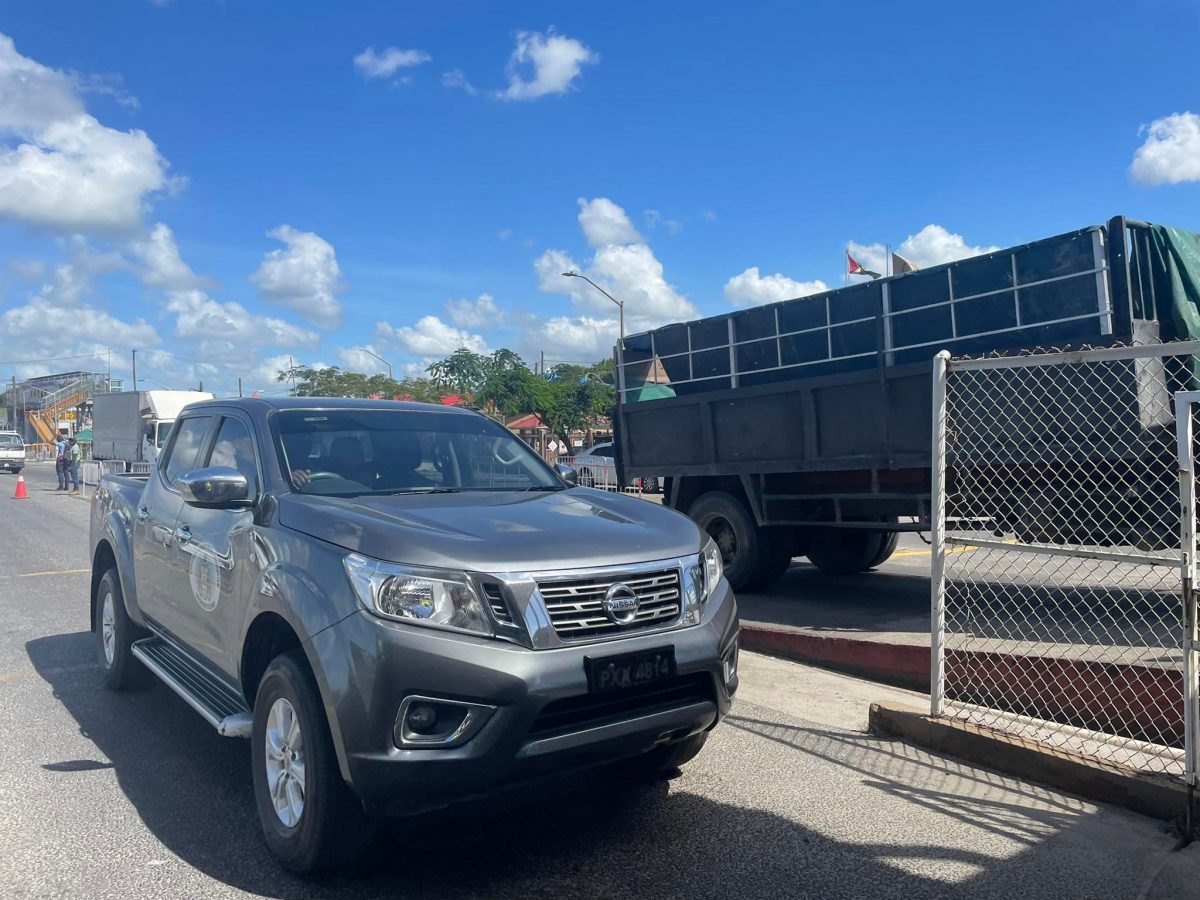In the rollout of its automated payment system, the Demerara Harbour Bridge (DHB) is currently targeting vehicles with charge accounts before moving on to individuals, General Manager Wayne Watson yesterday stated.
“We are looking to register all those companies that have charge accounts with us. Once that is done we will be moving on to the registration of individuals… since the start of the process it has been going smooth,” Watson explained yesterday, hours after the system went online.
In a brief interview with Stabroek News, he explained that the initiative is one they are using to modernise and improve the efficiency of their services to customers. The system is also aimed at preparing drivers for the new toll system that will be put in place when the new Demerara Harbour Bridge becomes operational.
The initiative is also expected to aid in the elimination of “bottlenecks” during peak hours of the bridge’s usage. He explained that the automated system will eliminate persons having to wait on change after paying the tolls and instances of drivers of left-hand-drive vehicles having to step out of their vehicle to make payments.
While it is not mandatory for vehicles to register, Watson advised that it is highly recommended for persons who traverse the bridge daily as it will contribute positively to the flow of traffic.
To register, one has to set up a GTT Mobile Money account and register for an account at https://www.dhbcportal.ssi.gy/sign-up on the website. The individual will be required to input necessary information about the vehicle. Once that is completed, they will have to visit the bridge company for verification, approval and installation of Radio Frequency Identification (RFID) tags. This will be done on Monday to Thursday from 08:00hrs -16:30hrs, Friday 08:00-15:30hrs, and Saturday 08:00-11:00hrs. The verification process takes approximately 10 minutes and Watson said it is necessary since they will want to ensure that the vehicle registered online is the same vehicle that will be tagged.
At present, the GM noted that installation of the RFID tags is free but customers will have to pay a fee of $5,000 to have it replaced.
Once the process is completed, scanners placed at the toll booths will automatically make the deductions as the vehicle drives through. The scanners located on every lane are able to process a payment from approximately 100 feet away and if any transactions are unsuccessful, it will be indicated to the toll clerks.
However, he assured that toll booth clerks will remain in place to monitor the process and receive payments for vehicles that are not a part of the automated system.
“We are not going to be putting anyone out of a job… no one will be sent home during the implementation of this new system. We still need them to monitor the process and alert security if [any] vehicle passes without paying.”
In a previous report, Watson had noted that a pilot testing phase of the system started in February this year with a few select vehicles and that process went well, thus the move to roll out the automated system to the public.
Watson said commuters will only need to pay their toll via a RFID tag which will be placed on the front of their vehicle and on their mobile phone.
According to him, bridge commuters will be registered to a database and they will need to have funds in their mobile money account. The magnetic RFID tag will go on the vehicle and when that vehicle approaches the toll station on the eastern end of the bridge, the system’s sensors will identify the commuters’ vehicle using the tag and the toll will be deducted automatically.
He noted that with the system, different tags will be created for different vehicles, whether cars, trucks or vans.
The harbour bridge corporation is looking to attract approximately 1500 vehicles in the initial stages, however based on its success yesterday, he noted that they may have to source additional tags shortly.





